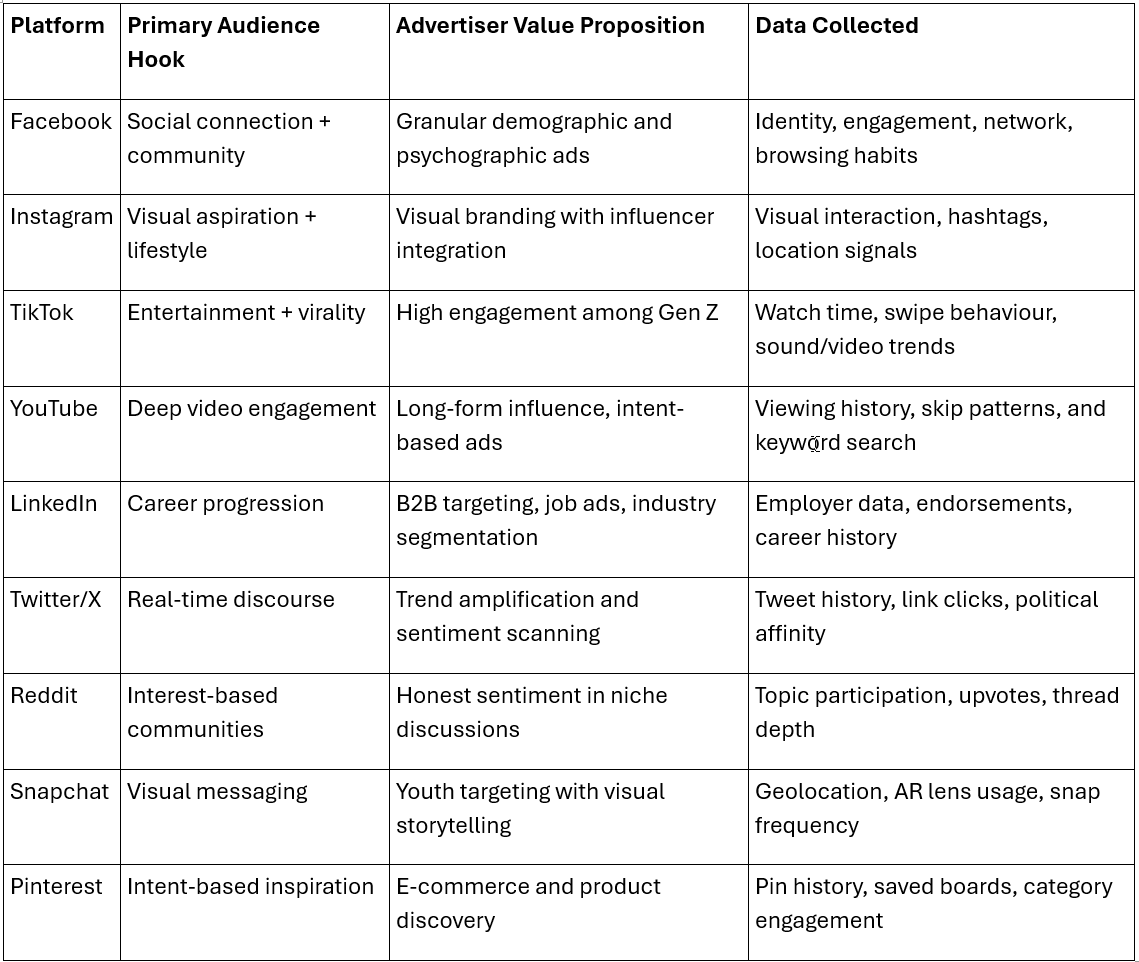Your Attention Is Their Product: How Audience Data Powers Every Social Media Monetization Model
Why Every Social Platform, From TikTok to LinkedIn, Runs on What They Know About You
Regardless of the social media platform you use, whether it's Facebook, YouTube, Instagram, TikTok, or LinkedIn, you're not the target customer. You're the asset. The actual value lies in what these platforms know about their audiences, how they segment them, and how they let third parties pay for access.
At the heart of every social platform is a data-driven economy. Content may be the surface-level currency, but the real trade is in attention, more specifically, in contextualized behavioural data. These platforms operate as complex marketplaces, where the audience powers the engine, the platform acts as broker and aggregator, and advertisers or buyers fuel the transaction.
What gets monetized isn't just what you see or click, but how long you pause, who you interact with, what you ignore, and when you're most likely to act. It's not just about selling eyeballs anymore. It's about selling predictive attention. Every tap, scroll, and dwell becomes part of a behavioural fingerprint.
Each platform collects a slightly different blend of data, tailored to its value proposition. Engagement metrics, such as likes, comments, and shares, are table stakes. Beyond that, identity signals (age, gender, job title), behavioural trails (session length, hover patterns), and network graphs (who influences or is influenced) feed powerful targeting algorithms. By incorporating content preferences, platforms can build exact models of intent, emotion, and even future behaviour.
To illustrate this diversity of data strategy, consider the value propositions across key platforms:
Despite the stylistic differences, the underlying structure remains the same: the product isn’t the platform, but rather the audience. And the deeper the behavioural profile, the higher the monetization potential. These platforms are often described as "free," but the cost is both informational and behavioural. You don’t pay in cash. You pay attention to the trails you leave and the predictive patterns you reinforce.
Regulations like GDPR and CCPA may require greater transparency, but the average user still has a limited understanding of what is inferred versus what is explicitly collected. The most valuable data is often what's invisible to the user, not what you gave, but what was derived.
For business leaders and product strategists, this presents a paradox. On one hand, these platforms offer access to finely tuned targeting mechanisms that drive conversions. On the other hand, they offer no ownership. You don’t build your audience, you build theirs. Your campaigns improve their data, not your strategic position.
Even when you're paying to advertise, you're still at the mercy of the platform. Businesses want their ads to be shown to target audiences, decision-makers, ideal prospects, and intent-rich leads. But how can they be sure that's what's happening? The platform provides just enough targeting feedback to keep you invested, but never enough to validate your ROI with certainty. The signal-to-noise ratio is deliberately controlled. You're granted a taste of reach, but never full access to the relationship.
Because your success, if not carefully managed, could become their loss. If the platform allows a business to build too direct a connection with the audience, it risks undermining its leverage. These systems are designed to keep you informed, but not in control.
So what do you own? If you’re investing in social media to grow your audience, understand the limits of your leverage. You’re renting access. The platforms keep the keys.
And if this model is so extractive, so fundamentally skewed in favour of the platform, why do we keep playing along?
Because until now, there hasn’t been a clear alternative.
But that’s starting to change. Some are beginning to ask: What if the audience owned the data? What if the business model were to flip, rewarding attention rather than exploiting it?
We’ll explore that in an upcoming post.



